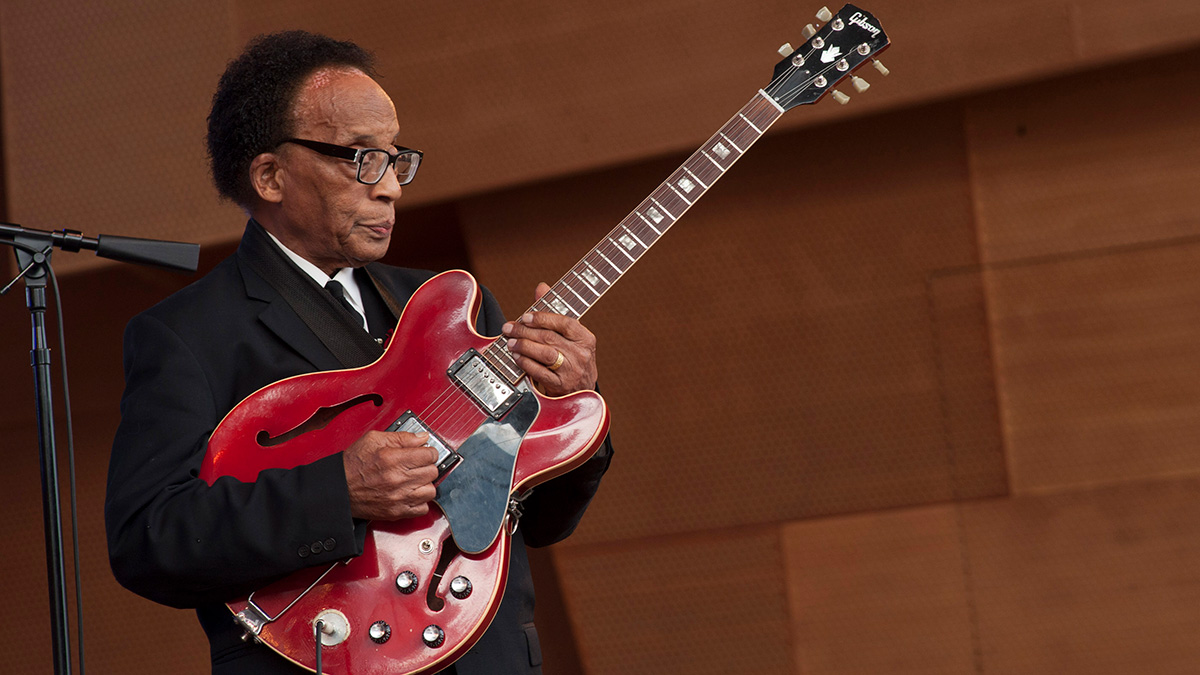Listen to Jimmy Page Detail the Long and Winding History of His Iconic Fender Telecaster
Get the full story behind the guitar that inspired Fender’s “Mirror” and “Dragon” recreations.
Fender has shared a new 10-and-a-half minute video that captures Jimmy Page visiting the company’s Custom Shop in Corona, California—“The first time I’ve actually been to a guitar factory,” Page says—and then sitting down to detail the full history of his famous 1959 Telecaster, which Fender recently released in both its iconic “mirror” and “dragon” finishes.
The Telecaster was originally owned by Jeff Beck, whom Page recalls first meeting. “There was an art college, [and] Jeff Beck’s sister was attending that art college,” Page says. “There was a record collector who collected rock ‘n’ roll and rockabilly records and they were having a conversation and she said, ‘My brother plays records and he’s sort of trying to learn guitar from them. But he’s only got a homemade guitar.’ Then he said, ‘Well we’ve got one of those here, you know.’
Page continues, “Well, I think they cooked it up—'Maybe we should get those two together.’ And there was a knock on the door and there was Jeff’s sister and there was Jeff holding his homemade guitar. We just bonded immediately.”
Page then recalls being asked to join the Yardbirds and instead recommending Beck for the gig—a move that led to his coming into possession of the Telecaster when Beck showed up at his door one day. ”He said, ‘This is yours for getting me in the Yardbirds,’ ” Page says. “Obviously I was very moved. There was a lot of love in that gesture.”

Eventually, Page also joined the Yardbirds, first as a bassist alongside Beck, and then moving over to guitar after Beck’s departure. At this point, he began playing the Tele with the band.
“I got to the point where I wanted to consecrate this guitar and really make it my own,” Page says. “Being there in the Yardbirds I was having to build my own identity within that group. To make it feel like my own instrument I started putting mirrors on it so that would be quite interesting in the light.”
He continues, “Then I had the idea that I wanted to actually have a complete consecration of it and strip it and paint it. So the whole of the dragon artwork, that was the overall idea of approaching it.”
Get The Pick Newsletter
All the latest guitar news, interviews, lessons, reviews, deals and more, direct to your inbox!
Finally, Page goes on to detail the Tele’s central role in the making of 1969’s Led Zeppelin, as well as its third and final refinishing.
“That journey of that guitar, it’s pretty extraordinary stuff,” he says.
You can hear the whole story in the video above.
For more information, head to Fender.

Rich is the co-author of the best-selling Nöthin' But a Good Time: The Uncensored History of the '80s Hard Rock Explosion. He is also a recording and performing musician, and a former editor of Guitar World magazine and executive editor of Guitar Aficionado magazine. He has authored several additional books, among them Kurt Cobain: Montage of Heck, the companion to the documentary of the same name.
“It holds its own purely as a playable guitar. It’s really cool for the traveling musician – you can bring it on a flight and it fits beneath the seat”: Why Steve Stevens put his name to a foldable guitar
“Finely tuned instruments with effortless playability and one of the best vibratos there is”: PRS Standard 24 Satin and S2 Standard 24 Satin review











